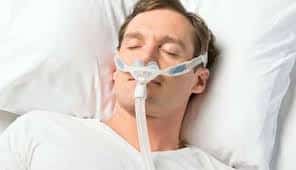
Using a CPAP machine is often framed as the solution: breathe easier, reduce apnea events, and restore restful sleep. Yet, beneath the surface lie CPAP therapy pitfalls that many users grapple with quietly. Even with a perfect prescription, reality can introduce leaks, discomfort, digestive symptoms, or frustration that physicians may not fully address. Recognizing these hidden pitfalls helps you stay effective, comfortable, and consistent with therapy.
Hidden Leaks & Seal Failures
One of the most common but under-discussed pitfalls is mask leaks. Because your CPAP machine delivers pressurized air, any gap in the mask seal — even a small one — allows air to escape. That not only reduces therapeutic efficacy but can cause distractions: noise, drafts toward the eyes, or sudden shifts in mask positioning.
SleepApnea.org’s troubleshooting guide highlights that leaky masks are among the most frequent CPAP issues. The Mayo Clinic also notes that discomfort, dry mouth, or mask leaks often point to fit or equipment errors.
Because leaks can erode the pressure your machine delivers, your apnea events might continue despite “using CPAP,” making it seem as though therapy is failing when the issue really lies in the mask interface. Over time, small leaks often prompt tighter straps, which in turn can worsen skin pressure and irritation.
Skin Irritation, Dermatitis & Pressure Marks
Another pitfall is the impact on skin. Skin irritation, contact dermatitis, or pressure marks often emerge in sensitive areas: nasal bridge, cheeks, or around mask edges. With long hours of contact, some users develop red indentations or sore spots.
CPAP dermatitis is an officially recognized side effect. Friction, moisture, or over-tight mask straps can spark rashes or raw skin. (sleepapnea.org) If these small skin problems aren’t addressed early, they may worsen, making mask use painful or discouraging.
Using mask liners, switching cushion materials, and inspecting skin nightly helps defuse this pitfall before it grows.
Aerophagia & Digestive Discomfort
Doctors often warn about mask fit or pressure, but aerophagia — swallowing air — is a pitfall less frequently discussed in standard consultations. When pressurized air is inadvertently pushed into your esophagus, it can lead to bloating, belching, or abdominal discomfort. For some, this may feel like minor gas, but for others, it’s a persistent source of trouble.
SleepApnea.org points out that aerophagia may cause CPAP users to reduce usage if discomfort becomes significant. (sleepapnea.org) Adjusting pressure settings, enabling exhalation relief, or switching to bi-level devices are strategies often overlooked in initial prescriptio
Exhalation Discomfort & “Fighting the Pressure”
Though machines deliver a constant pressure, not every user finds exhaling against that pressure comfortable. This is especially true at higher pressures. If exhalation feels labored or you wake gasping, that’s a pitfall many doctors may not highlight fully.
SleepApnea.org’s side effect listings refer to discomfort when exhaling as a sign you might need an adjustment. A physician often focuses on preventing apnea rather than optimizing breathing comfort—so this pitfall can go unmentioned.
A machine with expiratory pressure relief or switching to a bi-level mode can mitigate that struggle.
Adaptive Central Apnea & Treatment-Emergent Issues
One less familiar pitfall is treatment-emergent central sleep apnea (TE-CSA). In some patients, CPAP therapy for obstructive sleep apnea triggers central apnea events — pauses in breathing
with no respiratory effort. Mayo Clinic describes this phenomenon where CPAP “unmasks” a central component.
When that occurs, a user may feel worse despite using CPAP. Because standard care frequently assumes pure OSA, the emergence of a central component may not be immediately recognized or explained.
Psychological Fatigue & Declining Adherence
Even the most willing CPAP user may experience psychological fatigue. Month by month, struggling with minor discomforts — leaks, pressure adjustments, masks shifting — can wear down motivation. That drift toward inconsistency or skipping nights is a powerful therapy pitfall.
Research shows that mask or comfort problems are among top reasons users discontinue CPAP. Doctors often encourage persistence but may underplay the emotional strain of long-term device use.
Why These Pitfalls Matter
These pitfalls — leaks, skin irritation, aerophagia, exhalation discomfort, emergent apnea, and emotional fatigue — are more than nuisances. They erode CPAP therapy effectiveness, reduce adherence, and may leave users unprotected against the health risks of untreated sleep apnea (hypertension, cardiovascular disease, daytime sleepiness).
The Mayo Clinic underscores that successful CPAP use depends not just on prescription, but on ongoing troubleshooting and adjustment.
Without awareness and proactive care, these pitfalls can turn a life-saving therapy into a source of frustration.
Strategies to Avoid or Overcome These Pitfalls
- Monitor leak rates & pressure data nightly — trends reveal persistent leaks
- Reassess mask fit periodically — face shape and weight can shift
- Replace cushions, headgear, and parts proactively before failure
- Use liners, gel pads, or alternate mask types to reduce skin stress
- Engage devices with exhalation relief settings or bi-level modes
- Report odd symptoms (bloating, ear pressure, central events) to your provider
- Address emotional fatigue: celebrate small wins, get support, schedule regular check-ins
In summary, while CPAP therapy is widely praised and often prescribed as the gold standard, it’s not free from complexity. The pitfalls that doctors may not always mention — leaks, skin issues, aerophagia, pressure discomfort, central apnea, and mental weariness — deserve attention. When you spot and manage these pitfalls, you protect not just your sleep, but your confidence and long-term adherence to therapy.
